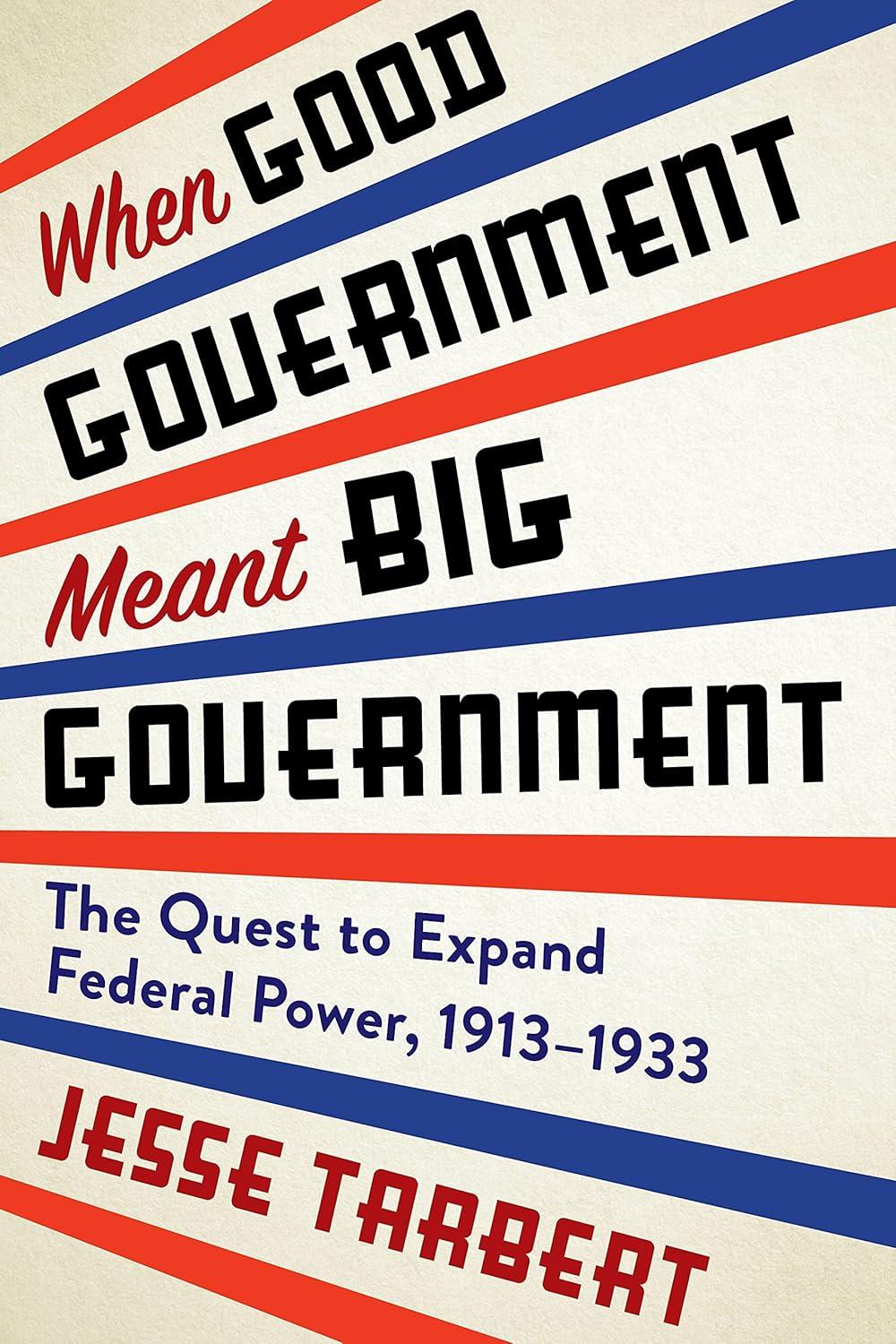At one time, progressive historians depicted the 1920s as a reactionary decade. In their whig (or anti-whig) interpretation of history, the era interrupted the onward march toward the modern national welfare state, dismissed as a caesura between Woodrow Wilson’s New Freedom and Franklin D. Roosevelt’s New Deal. Since about the 1960s, academic historians have changed their narrative, instead stressing the maintenance and even extension of progressive statism across the 1920s. In his story of the frustrated effort of Republican progressives in the 1920s, Jesse Tarbert adds to this revision. However, his new book, When Good Government Meant Big Government, contributes a little more than the evidence can bear. He exaggerates the progressiveness of his protagonists, overplays the race card, and neglects important constitutional issues.
Tarbert tells the story of a group that he calls “elite reformers,” predominantly Republican progressives associated with the Wall Street (as opposed to the midwestern Main Street) wing of the party. Henry Stimson, William Howard Taft, Elihu Root, and Felix Frankfurter all came out of the late 19th-century civil service (or “good government”) movement, and now sought to make the federal government more effective and efficient by applying the methods of the modern business corporation to its operations. Tarbert focuses on three issues: the executive budget, executive branch reorganization, and anti-lynching legislation. The last might seem like a curious choice, but Tarbert explains that the elite reformers saw lynching as an example of lawlessness and thus an inept state. However, the choice of these particular issues is indeed one of the analytical weaknesses of the book.
Tarbert’s title is more than a little misleading. These reformers were not really pursuing “big government” in the post-New-Deal sense of the term. They did propose to extend federal power into new fields like education and welfare, radio and air transport, but these were extremely slight proposals and (except for radio) came nowhere close to enactment. (Indeed, one of these small programs, the Sheppard-Towner “maternity act” for mothers and infants, was phased out by Congress after a final two-year extension in 1927.) More often than not, they had to emphasize “economy”—the money saved by reform—rather than the more “efficient” provision of an ever-greater number of government benefits. Tarbert does rightly make this point repeatedly—that the reformers were forced by political considerations to emphasize frugality.
